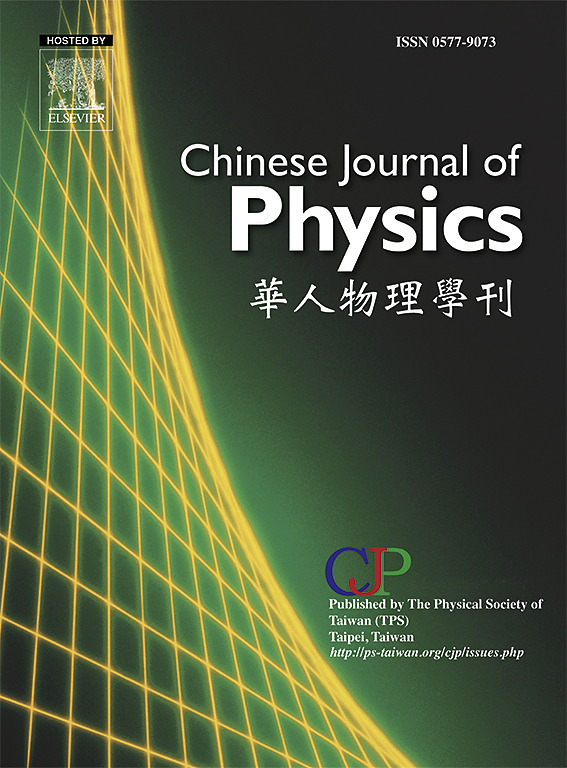大气压氦直流微放电耦合两项玻尔兹曼方程的流体模拟
IF 4.6
2区 物理与天体物理
Q1 PHYSICS, MULTIDISCIPLINARY
引用次数: 0
摘要
研究了氦中大气压直流电微放电的空间电子能量分布函数模型和等离子体流体方程。在COMSOL Multiphysics中使用Plasma Module进行仿真。在模型中,对放电区域的每个位置求解经典两项近似的玻尔兹曼方程,并通过电子平均能量与等离子体流体方程耦合。利用由玻尔兹曼方程解得到的初始数据,计算流体模型中使用的速率常数和输运系数,从而闭合计算循环。为了验证这种方法,我们将模拟结果与“局部平均能量近似”模型的结果和实验数据进行了比较。本文表明,仿真结果与实验结果吻合良好,强调了采用耦合计算方法的保真度。此外,本文使用的空间依赖电子能量分布函数模型与“局部平均能量近似”模型之间的差异突出了在大气压微放电建模和分析中考虑自洽计算方法的重要性。本文章由计算机程序翻译,如有差异,请以英文原文为准。
Fluid modeling of the atmospheric pressure helium direct current microdischarge coupled with the two-term Boltzmann equation
We examine the Space-Dependent Electron Energy Distribution Function model coupled with plasma fluid equation for atmospheric pressure direct current microdischarge in helium. The simulation were performed in COMSOL Multiphysics using Plasma Module. In the model, the Boltzmann equation in the classical two-term approximation is solved for each position of the discharge region and is coupled with the plasma fluid equations by way of the electron mean energy. Utilizing initial data derived from the Boltzmann equation solution, the rate constants and transport coefficients are computed, which are used in the fluid model, thus closing the computational loop. To validate this approach, we compare simulation results with both the outcomes of the “local mean energy approximation” model and experimental data. Here we show that simulation results exhibit good agreement with experimental results, underscoring the fidelity of using coupled computational approach. Furthermore, disparities between using here the Space-Dependent Electron Energy Distribution Function model and the “local mean energy approximation” model highlight the importance of considering self-consistent computational approaches in atmospheric pressure microdischarge modeling and analysis.
求助全文
通过发布文献求助,成功后即可免费获取论文全文。
去求助
来源期刊

Chinese Journal of Physics
物理-物理:综合
CiteScore
8.50
自引率
10.00%
发文量
361
审稿时长
44 days
期刊介绍:
The Chinese Journal of Physics publishes important advances in various branches in physics, including statistical and biophysical physics, condensed matter physics, atomic/molecular physics, optics, particle physics and nuclear physics.
The editors welcome manuscripts on:
-General Physics: Statistical and Quantum Mechanics, etc.-
Gravitation and Astrophysics-
Elementary Particles and Fields-
Nuclear Physics-
Atomic, Molecular, and Optical Physics-
Quantum Information and Quantum Computation-
Fluid Dynamics, Nonlinear Dynamics, Chaos, and Complex Networks-
Plasma and Beam Physics-
Condensed Matter: Structure, etc.-
Condensed Matter: Electronic Properties, etc.-
Polymer, Soft Matter, Biological, and Interdisciplinary Physics.
CJP publishes regular research papers, feature articles and review papers.
 求助内容:
求助内容: 应助结果提醒方式:
应助结果提醒方式:


